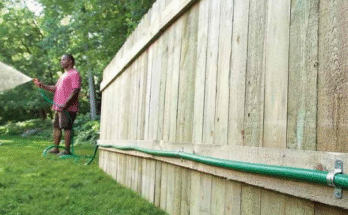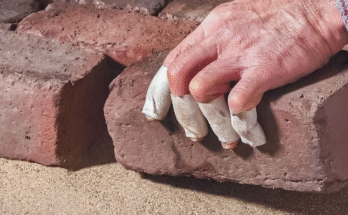A ‘cut roof’ will be constructed using timbers that are cut on site and built up using rafters, ridge boards, joists, collars and purlins. The exact configuration of the ‘cut roof’ will be determined by the size of the roof and the dimensions of the timbers.
The joists prevent the outward spread of the rafters/walls, and these conveniently give support for the ceiling below. Purlins, along with the associated struts, are used to give some additional support for the rafters. The purlins run at right angles to the rafters, the associated struts are positioned under (approximately) every fourth rafter to attach to a joist above a supporting wall below. Hangers, in conjunction with a longitudinal binder running at right angles to the joists, are used to help hold the ceiling up. Each hanger is nailed between (approximately) every fourth rafter and the joist below. The larger the size of the joist, the less likely the need for hangers.

A ‘truss roof’ comprises factory-made trusses which are delivered to site complete and simply erected. Today’s building regulations demand a detailed calculation of the stresses, timber size, etc used in roof construction, so factory-made trusses are becoming the preferred solution as all these details can be calculated on a computer.

It’s important to avoid cutting, modifying or removing any part of a timber roof or changing the roof covering – for example by replacing a slate roof covering with a concrete tile covering – without consulting a structural engineer.
During a recent building survey of a period property, and as shown in the photograph below, we noted that a number of collar ties had been removed to facilitate the installation of solar panels some 30 years previously.

This had caused some roof spread which in turn resulted in cracking to the external walls and some deflection to the ridge. It should be noted that solar panel installers are now required to carry out a detailed inspection of a roof structure to ensure there is adequate support for any additional loading such as solar panels. Collars, ridge collars and/or collars further down the rafters are sometimes used to provide additional binding between the rafters on both sides of the roof. Where used, they are usually fixed to an occasional pair of rafters along the roof. In this instance, following the building survey, we recommended that the missing collars had to be replaced.


